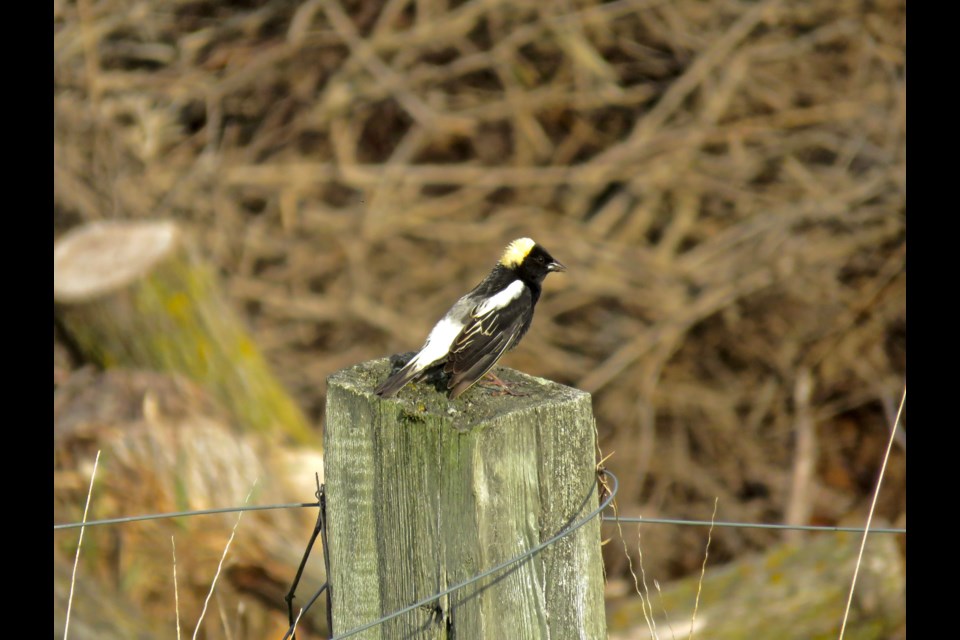I live on a farm where I have a loosely defined personal “backyard” visited by many regular feeder birds, and I have access to the larger property. At the moment, I am delighted by the happy, distinctive sounds of Bobolinks over the hay fields. Bobolink is one of about 30 grassland bird species in Ontario.
Its song is a sort of metallic bubbling. It reminds me of R2D2’s voice from Star Wars. Unusual in songbirds, Bobolinks sing while flying. The male beats its wings rapidly while singing a merry tune, seemingly not covering much distance for his efforts.
I say seemingly, because his efforts are really directed to attracting the attention of the ladies. It’s likely he gains distance in that regard, as Bobolinks are polygamous with several mates in one season. Allaboutbirds.org says, “They’re also often polyandrous: each clutch of eggs laid by a single female may have multiple fathers.”
It’s more than his happy sky dance that does the trick. It’s his unique, and spiffy, attire of black on the front, white on the back and yellow head cap that makes him attractive. Male Bobolinks molt before leaving South America so they are ready to impress when arriving here. They molt again in the fall reverting to the brown and beige colouring similar to that of females.
When playing the field, they sit on fence posts or higher points in vegetation so their song can carry. It seems to be having the desired result, as the numbers of Bobolinks on this property appear to have increased in the past few summers. That’s good news as the Bobolink is threatened, and protected under the Species at Risk Act.
According to the Ontario government: “Threatened” means the species lives in the wild in Ontario, is not endangered, but is likely to become endangered if steps are not taken to address factors threatening it. Bobolinks can be beneficial in hayfields since they eat large numbers of insects that could otherwise be harmful to crops.
Cutting hay early is one possible cause of declining overall numbers, and they also face other factors in their winter breeding grounds.
Bobolinks fly an incredible 20,000km to and from South America each year, according to allaboutbirds.org. Obviously when they aren’t flying to impress the opposite sex, they can cover large geographical distances.
These are fascinating birds. I am grateful that here on this farm, the fields are alive with the sound of Bobolinks.
As the weeks go by, I will share experiences of bird visitors to this property with readers. In the meantime, keep your eye to the sky and look for birds that may come by.
Rosaleen Egan is a freelance journalist, a storyteller, and a playwright. She blogs on her website rosiewrites.com



